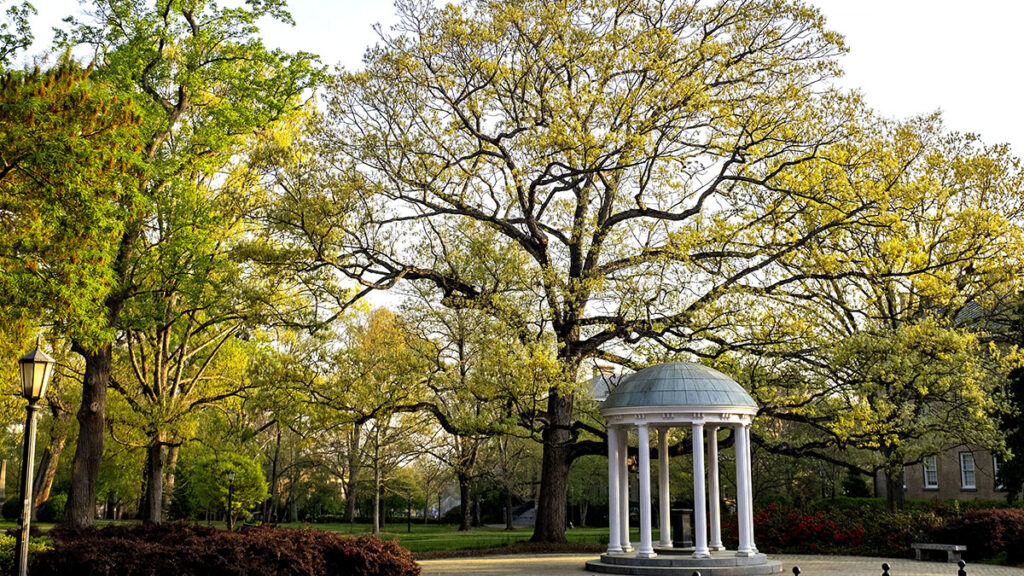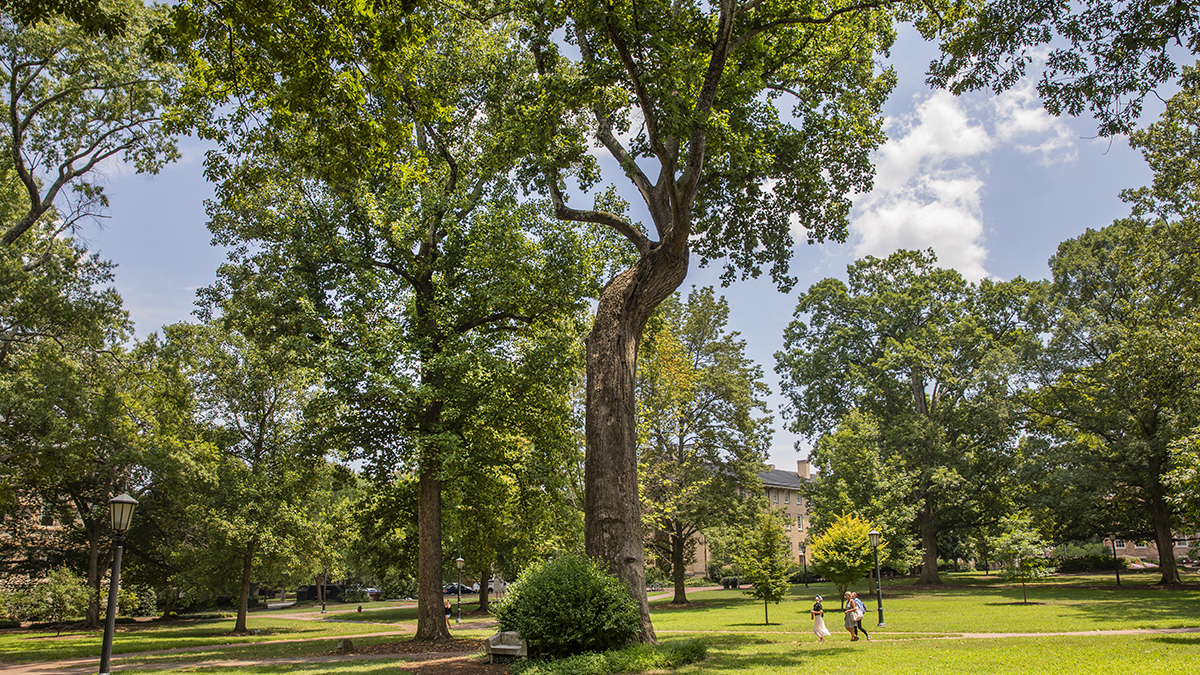
(Jon Gardiner/UNC-Chapel Hill)
Trees are a quintessential part of Carolina. Not only do they shape the landscape of Carolina, but they mitigate the impact of climate change on our own campus. Evaporation, transpiration, and the natural shade they provide allow tree canopies to lower surface and air temperatures as much as 20 degrees Fahrenheit. Trees can also reduce energy consumption, enhance water quality, manage stormwater by capturing and storing rainwater, and additionally, the chlorophyll in the leaves of tree canopies deflects radiation from the sun. This is why it is important to plant trees strategically.
When deciding where to plant a new tree, one must decide whether the tree will survive given the soil content, the species of tree to plant, and the size of the area in which the tree roots will be able to develop. Planting new trees can also change the aesthetic of that area of campus–be it wooded or more structured.
Trees are important for maintaining the biodiversity in an area by allowing nesting grounds for birds and increasing the variety of species. Here at UNC, we have more species of trees than you could imagine–from heritage trees such as the Davie poplar to classic southern oak trees.
A century of reforestation has proven to combat rising temperatures–with the Southeast leading the change. Although temperatures across North America have risen by 1.23o Fahrenheit on average, the East coast and the southeast have cooled by 0.5o F today, compared to 100 years ago. Below image A shows how recently these trees were planted–with the dark blue being in the past 50 years. Image B shows all of the areas in the southeast where reforestation has occurred.

https://phys.org/news/2024-02-century-reforestation-eastern-cool.amp
